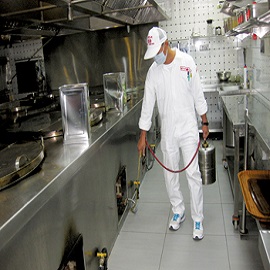- 253 772 10739
- [email protected]
A2Z ENGINEERING SOLUTIONS
YOUR ENGINEERING PARTNER IN EAST AFRICA REGION

Waste Management and Pest Control
Our team provide a safe and effective waste management service. We provide support in developing and implanting sustainable waste management practices and look at new technology and advancements in waste collection.
We also deliver and manage clean, effective, and discreet Pest Control service. We take a proactive approach to developing both a preventative and, if the issue ever arose, a responsive service to eradicate pests, while maintaining the Health & Safety of the facilities at all times.
Ship Sanitation
Ships can transport infected humans and other vectors, such as mosquitoes and rats, between ports and can therefore act as a means of national and international dissemination of disease and disease agents. In order to protect passengers, crew and the public, the focus should be on proactive and preventive measures. For example: the design and construction of the ship should be as failsafe as possible with respect to maintaining a sanitary environment; the food, water and materials taken on board should be as safe as possible; crew should be well trained in ship sanitation and have all the equipment, facilities, materials and capacity necessary to permit the maintenance of a sanitary environment on board; a risk management system should be put in place and maintained to ensure the identification, reporting and mitigation of public health risks.
Pest Control on Vessels
Pest control on vessels is of major importance as pests such as rodents, cockroaches and mosquitoes are linked to the spread of international disease. The Port Health Office may request “Ship Sanitation Certificates (SSCs)” to declare ships free from disease and the vectors of disease according to the Prevention and Control of Disease Ordinance and the International Health Regulations. All ships on international voyages were required to renew this certificate every six months, and this renewal required all areas of the ship to be inspected. The are of particular importance for the prevention and control of public health risks on board ships on international voyages.
Stored Food Beetles Control
Stored Food Beetles are usually brought into the home in an infested package of food. Initially, infestations are difficult to detect because the insects involved are quite small, especially in the egg and larval stages. The most common insects infesting food in your home are in the insect orders Coleoptera (beetles). Beetle larvae are either grublike and legless or have only three pairs of legs, all located close to the head. Both larvae and adults of beetles feed on foodstuffs.




